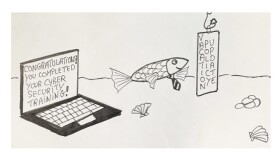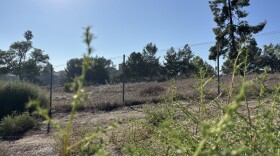On the morning of March 15, I started getting texts from worried parents at my daughter's New York City public school. Rumors were rocketing around that a second-grade teacher had tested positive for the coronavirus after being out sick for a week. The school hadn't made any announcements, and parents were getting frantic. The tension ended a few hours later when Mayor Bill de Blasio announced that evening that all New York City school buildings would be closed the next day.
Soon the streets went silent. Then came the sirens; the nightly cheers for essential workers; the fireworks and protest chants. Before the city flattened the curve, at least 19,000 New Yorkers had died, including at least 79 New York City Department of Education employees.
Once an epicenter of the pandemic, New York City's cases have remained low since June. Since the beginning of August, the city's coronavirus test positivity rate has been around or below 1%. That matches countries such as Germany, Norway and Denmark, where schools have reopened with precautions in place, without leading to coronavirus spikes.
It should be a proud moment: Of the nation's 10 largest school districts, New York City — the largest in the country, with 1.1 million students — is the only one planning to open its doors. The plan is for a hybrid schedule, with cohorts of students attending on alternate days to allow space for social distancing, while remote learning continues at the same time.
But objections are mounting over safety procedures, logistics and money — the same objections that have cropped up in other districts where schools have contemplated reopening.
De Blasio recently tried to reassure parents and educators that the city's reopening plans are airtight. He visited an elementary school in Brooklyn where cleaning supplies and personal protective equipment were stacked high. The next day, in a press conference, he painted school reopening as an opportunity for healing. "Here is going to be a moment to bring back our schools and address what everyone's been through," he said. "It's been tough."
Some teacher and parent groups argue fundamental details on staffing, facilities, hygiene, scheduling and contact tracing are missing from the city's reopening plan. They say the mayor waited too long to shut down schools in the spring — and they don't trust the city's leadership to keep them safe now or to treat them fairly.
"The city has failed to address many of our crucial concerns and ignored repeated appeals from school leaders to allow enough time to implement highly complicated protocols," the head of the city's principals union wrote in a letter dated Aug. 12.
"It is impossible to ignore the dozens of missing pieces in the jigsaw puzzle we are being asked to solve," a group of principals from Manhattan wrote.
"By reopening school buildings without proper precautions and measures, it is inevitable that communities like ours will, once again, suffer the most," wrote principals in Sunset Park, Brooklyn, a low-income immigrant community.
The United Federation of Teachers, which represents most of New York City's educators, went one step further. The union set unilateral conditions for a safe reopening, including testing every teacher and every student within 10 days before school starts, and ensuring contact tracing is in place to notify every member of a school community within 24 hours of a case. If those conditions are not met, President Michael Mulgrew said, "The union is prepared to go to court and/or go on strike if we need to." A strike — or any kind of job action, including a sickout — by public employees would be in violation of New York state's Taylor Law, and could bring fines and even jail time for Mulgrew.
Meeting the union's demands and school leader concerns will take more money, but the city is facing a budget crisis. The mayor is asking the state Legislature to lift borrowing limits, as was done after the Sept. 11 attacks. Without an infusion of cash, schools Chancellor Richard Carranza said, thousands of city education jobs could be lost, and in-person learning would be out the window.
Carranza spoke in a public meeting that dragged on into the wee hours, where more than 100 community members spoke against schools reopening.
Conversations with more than a dozen teachers and students yielded a common list of concerns over the start of school, whether it takes place in person or online.
Ryan Michele Woods, a 16-year veteran middle school teacher in Brooklyn, is worried about ventilation. She says her school building is covered in scaffolding and netting so the brick can be repointed. Only about half of her classroom windows open, and those that do, open about 3 inches. Woods says when she has opened the windows during the construction project in the past, dust billowed inside.
"Clouds of construction dust are only going to make students begin to cough and sneeze even from the inside of whatever hastily-put-together mask program the [city's Department of Education] has the budget to allocate for students."
Meredith Hackett, a kindergarten teacher in Brooklyn, is worried about teaching while social distancing. "I have to teach them how to read from afar," she says. "I have to teach them how to zip their coats from afar."
Hardest of all is the social and emotional component of adjusting to school.
"On the first day of school, I shut that door, and it's me and 24 4- and 5-year-olds, and half of them are crying. I know what to do with that — I'm pretty good at what I do. I've got them on the rug. I've got them singing songs."
Except: "We're not allowed to sing this year."
Pam Segura, who teaches high school English Language Arts in the Bronx, is worried about the hybrid scheduling. Can she really teach online and in person at the same time? "I'm like genuinely confused about how that's going to happen," she says. "I feel like I need like 25 different planners and different calendars. I feel like it's A Beautiful Mind, you know."
Segura is unclear how her students who are English Language Learners, or in special education, are going to receive services. And she doesn't know how she's going to address the trauma of her students — who live in one of the neighborhoods hardest hit by the coronavirus, and who also saw intense street protests after the death of George Floyd.
"I want to always create a space for my students to be able to process what's happening in their world. ... And I don't feel confident as a teacher and as a facilitator that I can do that in a virtual space," she says.
Eyhdi Osorio, a rising 12th-grader in Queens, is worried about classmates whom she sees on social media attending large parties without masks. "They're not being cautious now," she says. "Why would they be cautious when it comes to school?"
Osorio has a 3-year-old son and lives with family members who have health conditions that make them more vulnerable to the coronavirus. At the same time, she says, while she got high grades in remote learning, going back to school and leaving her son with his babysitter would make for a better schedule.
"I want some form of normal back in my life. And it's just scary having to choose, you know, between keeping your family safe and your own individual needs."
Instability and delays have themselves been obstacles to a smooth reopening. For example, on July 16, de Blasio promised 100,000 free child care spots would be provided for school-age children. Over a month later, on Aug. 18, a Department of Education spokesperson offered no more details on the program. On Aug. 19, with the start of the school year just weeks away, the department sent out a survey to assess family child care needs.
Another example: On Monday, after lobbying by public and private schools, the mayor announced that schools had until the end of the week to apply to hold classes outdoors — including by closing streets, similar to the program that's allowed restaurants to reopen. But expenses would fall to individual PTAs, putting less affluent schools at a disadvantage.
Martin Urbach, a high school music teacher in Manhattan, is worried most about the overall lack of planning.
"My main concern is that we public school teachers have not been given the time or the resources to actually plan rich and strong curriculum," he says. "The back and forth and the unknowns are creating so much trauma. People are in this constant state of fear and this constant state of unknowing that is preventing people from engaging with educational work."
He says it affects his students, too. "They're so confused. They're texting me now and they're like, when does school start?"
As of Tuesday, that's a question to which teachers, students and parents across the city still don't have an answer.
Copyright 2020 NPR. To see more, visit https://www.npr.org.






